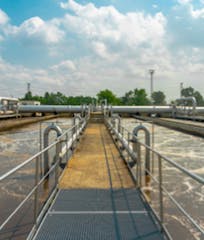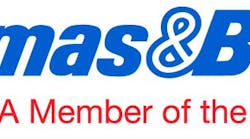Even though a 50-year lifespan is typical for an operating facility in the water and wastewater industry, the fact that very corrosive elements are used in the treatment process, along with the constant exposure to natural elements, creates unusual challenges for electrical products.
One of the East Coast’s largest public works projects provides more than 1.1 billion gal of water each day to approximately 9 million residents. To meet this demand, now and into the future, a new 12-acre, 290-mgd underground plant was completed in 2014.
Treatment of the water itself will involve a stacked dissolved air floatation filtration. The filtered water will be disinfected through ultraviolet and chlorine treatments, and then chemically adjusted as required and subsequently dosed with orthophosphate for corrosion control and hydrofluorosilicic acid to add fluoride.
Thomas & Betts was able to demonstrate to the utility that specifying the Ocal conduit with PVC and blue urethane coating could solve its corrosion concerns. By encapsulating the conduit, the Ocal conduit prevents corrosion from striking weak points in the electrical system. Ocal is a complete system with more than 2,500 varieties of fittings in stock, as well as corrosion-resistant supports and patching compounds.
Ocal meets NEMA RN-1-1989 standard 2.1, which reads, “Where unusually corrosive elements require additional protection, it is recommended that threads be zinc coated with a hot dipped process or equivalent.”
Thomas & Betts starts with steel conduit, which is then threaded and hot-dip galvanized in its facilities before application of the PVC coating. Ocal hot-dip galvanizes the threads. Hot-dip galvanizing is the process through which the steel conduit is dipped in molten zinc, causing the zinc to alloy with the iron at the surface.



